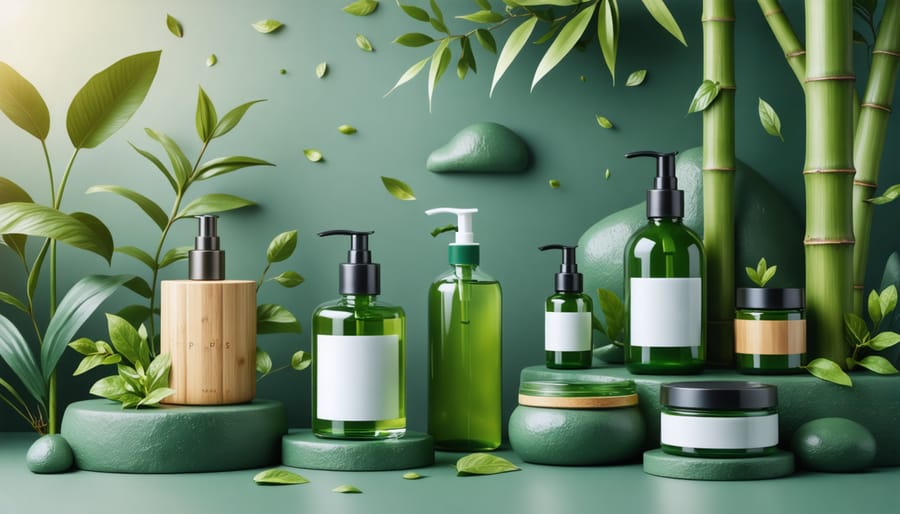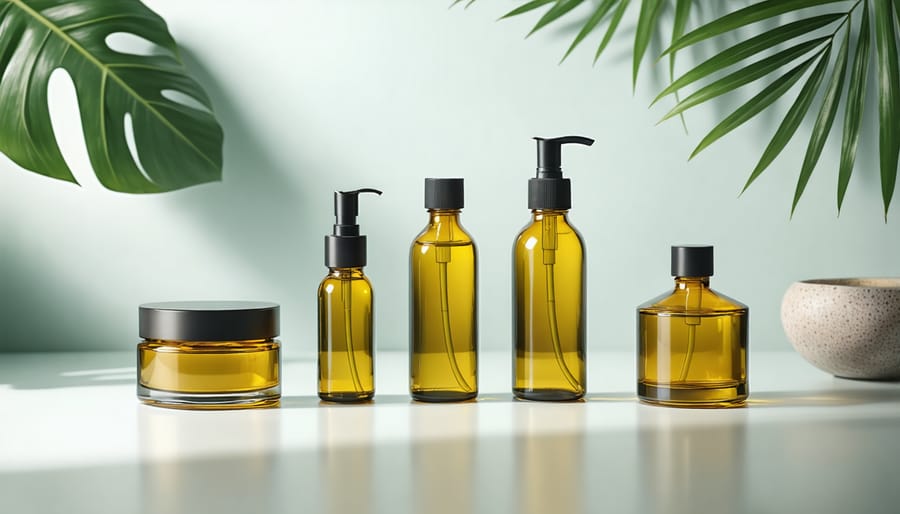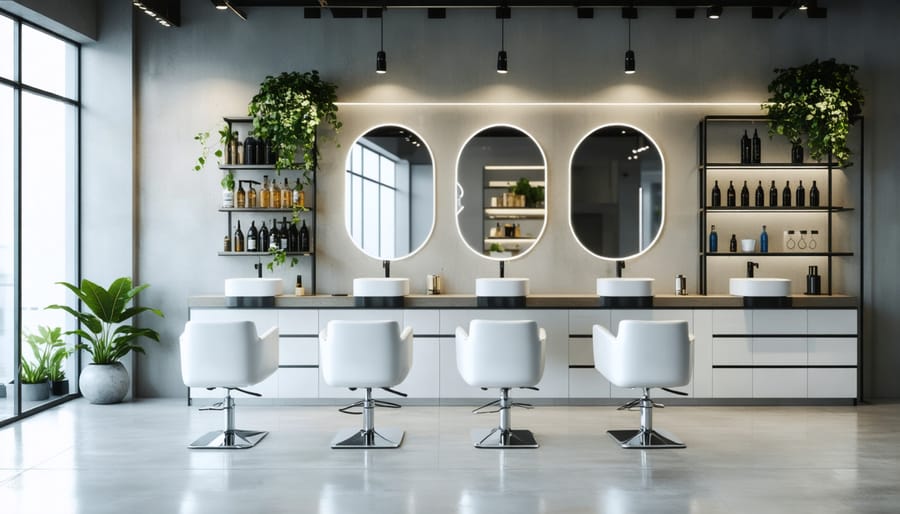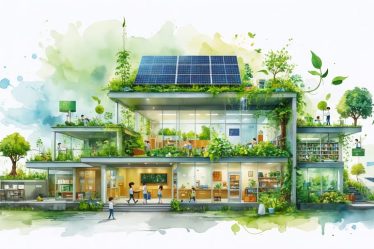
Transform your beauty business into a beacon of sustainability while boosting your bottom line. Leading beauty brands and educational institutions are revolutionizing the industry through innovative eco-friendly practices that not only protect our planet but also resonate deeply with conscious consumers.
From L’Oréal’s commitment to 100% renewable energy in their manufacturing to small independent salons implementing zero-waste policies, sustainable business practices are reshaping beauty education and services. These pioneers demonstrate that environmental responsibility and business success aren’t mutually exclusive – they’re increasingly interdependent.
Consider this: 73% of millennials are willing to spend more on sustainable brands, making green practices not just environmentally responsible but financially savvy. Whether you’re running a beauty school, managing a salon, or leading a cosmetics company, implementing sustainable practices isn’t just about reducing environmental impact – it’s about securing your business’s future in an increasingly eco-conscious market.
In this comprehensive guide, we’ll explore proven sustainable practices that beauty businesses are successfully implementing today, from waste reduction strategies and energy-efficient equipment to eco-friendly product lines and sustainable education programs. These practical examples will help you transform your beauty business into a more sustainable operation while maintaining profitability and enhancing your brand’s reputation.
Eco-Friendly Product Development and Packaging
Sustainable Ingredient Sourcing
I remember when I first started exploring sustainable business practices, ingredient sourcing seemed like such a daunting task. But trust me, it’s become one of the most rewarding aspects of running an eco-conscious business. Today, many forward-thinking companies are revolutionizing their supply chains with innovative sourcing strategies that benefit both the planet and their bottom line.
Consider the story of a local skincare brand I recently collaborated with – they transformed their business by partnering with indigenous farmers who practice regenerative agriculture. Not only did this ensure high-quality, sustainable ingredients, but it also supported local communities and preserved traditional farming methods.
Some practical ways to implement sustainable ingredient sourcing include:
– Establishing direct relationships with local farmers and suppliers
– Prioritizing organic and fair-trade certified ingredients
– Implementing a transparent supply chain tracking system
– Supporting suppliers who use regenerative farming practices
– Choosing seasonal ingredients to reduce transportation impacts
When seeking natural alternatives, look for ingredients that are abundantly available in your region. For example, instead of importing exotic oils, consider locally sourced alternatives with similar properties. This not only reduces your carbon footprint but often leads to discovering unique ingredients that can set your products apart.
Remember, sustainable sourcing isn’t just about environmental impact – it’s about creating a positive ripple effect throughout the entire supply chain. Start small, perhaps with one or two key ingredients, and gradually expand your sustainable sourcing practices as you build relationships with reliable suppliers.
Zero-Waste Packaging Solutions
Innovative packaging solutions are revolutionizing how beauty businesses approach sustainability, and I’m excited to share some game-changing examples I’ve seen in action. The shift towards sustainable packaging design isn’t just a trend – it’s becoming a crucial business practice that resonates deeply with conscious consumers.
One of my favorite developments is the rise of refill stations in beauty stores. Imagine walking into your local beauty supply shop with your empty shampoo bottle and filling it up from an elegant dispensing system. These stations not only reduce plastic waste but create an engaging shopping experience that customers love.
Many brands are embracing eco-friendly product packaging through creative solutions like biodegradable containers made from mushroom materials or seaweed-based packaging that dissolves in water. I recently visited a salon that switched to concentrated product formulas in minimal packaging, allowing customers to dilute products at home – genius!
Subscription-based refill programs are another innovative approach. Customers receive their first product in a durable, reusable container, then get regular refills in minimal packaging. Some businesses even offer loyalty points or discounts for participating in these programs, making sustainability both accessible and rewarding for their clientele.
Remember, transitioning to zero-waste packaging doesn’t have to happen overnight. Start with one product line or service area and expand based on customer feedback and operational capacity.

Resource Management in Beauty Education
Digital Learning Materials
Let me share a game-changing shift I’ve witnessed in beauty education: the move toward digital learning solutions that not only enhance the learning experience but also significantly reduce our environmental footprint. Gone are the days of printing countless handouts and training manuals!
By transitioning to digital materials, beauty businesses are saving thousands of trees while creating more engaging and interactive learning experiences. Think about it: a single iPad or tablet can store entire libraries of training materials, technique videos, and assessment tools. Plus, these resources can be updated instantly without generating waste from outdated printed materials.
I’ve seen firsthand how virtual classrooms and digital workbooks have transformed beauty education. Students can access their materials anywhere, make digital notes, and participate in virtual demonstrations – all without using a single sheet of paper. The best part? These materials can be easily shared, updated, and archived, making them incredibly efficient for both educators and students.
Some practical ways to implement digital learning include:
– Creating interactive PDF workbooks
– Using cloud-based training platforms
– Implementing virtual reality tutorials for technique practice
– Developing mobile apps for quick reference guides
– Recording and storing video demonstrations digitally
Remember, switching to digital doesn’t mean losing the personal touch – it’s about enhancing the learning experience while being kind to our planet. Plus, your students will thank you for helping them stay organized without lugging around heavy textbooks!

Waste Reduction Strategies
Let me share a game-changing moment from my own sustainable journey – realizing that small changes in our training practices can lead to significant waste reduction. Beauty education doesn’t have to come at the expense of our environment!
Start by implementing a digital-first approach to your training materials. Instead of printing hundreds of handouts, create engaging digital workbooks and reference guides that students can access on their tablets or phones. This not only saves paper but also allows for easy updates and interactive learning experiences.
When it comes to hands-on practice, consider creating product portion guides for different procedures. I’ve seen how a simple measuring system can reduce product waste by up to 40% during training sessions. For example, use small containers or marked dispensers to help students understand exactly how much product they need for each application.
Establish a recycling station in your training area with clearly labeled bins for different materials – one for empty product containers, another for paper, and a separate one for disposable items that can’t be recycled. Make it a part of your curriculum to teach proper disposal methods and the importance of mindful product usage.
Don’t forget to track your waste reduction efforts! Keep a simple log of product usage before and after implementing these strategies. This data not only helps monitor progress but also demonstrates to students the real-world impact of sustainable practices. Plus, it’s incredibly motivating to see those numbers improve over time!
Remember, sustainable practices aren’t just good for the planet – they’re good for your bottom line too.

Energy and Water Conservation
Energy-Efficient Equipment
As a salon owner, I’ve learned that choosing energy-efficient equipment isn’t just good for the planet – it’s fantastic for your bottom line too! Start by looking for tools and appliances with ENERGY STAR certification, which typically use 10-50% less energy than standard models. When selecting hair dryers, straighteners, and other styling tools, opt for newer models with automatic shut-off features and adjustable temperature settings.
I’ve found that LED lighting makes a huge difference in both energy consumption and ambiance. By replacing traditional bulbs with LED alternatives, you can reduce lighting energy usage by up to 75% while providing better illumination for detailed work. Consider installing motion sensors in less frequently used areas like storage rooms and bathrooms to prevent unnecessary energy waste.
For larger equipment like washing machines and dryers, invest in high-efficiency models that use less water and electricity. Many modern washers have eco-settings that optimize water temperature and cycle duration, significantly reducing energy consumption. When maintaining your equipment, regular cleaning and servicing ensure they operate at peak efficiency – I schedule monthly maintenance checks to keep everything running smoothly.
Don’t forget about small changes that add up: using power strips to eliminate phantom energy draw when tools aren’t in use, setting computers and tablets to energy-saving modes, and utilizing natural light whenever possible. These practices not only reduce your carbon footprint but can lead to substantial savings on utility bills.
Water-Saving Techniques
As a salon owner myself, I’ve discovered that small changes in our water usage can make a huge impact on both our environmental footprint and our bottom line. Let’s explore some practical water-saving techniques that are transforming the beauty industry.
Installing low-flow faucet aerators in your washing stations can reduce water consumption by up to 60% without compromising the client experience. These affordable devices maintain strong water pressure while using significantly less water – a win-win for both sustainability and client comfort.
Consider implementing a water recycling system for your hair washing stations. While the initial investment might seem substantial, many salon owners report recovering the costs within 12-18 months through reduced water bills. These systems filter and recycle water for subsequent washes, dramatically reducing overall consumption.
For cleaning purposes, switch to microfiber mops and cloths that require minimal water while providing superior cleaning power. Additionally, adopt a “spot cleaning” approach during the day, saving thorough mopping for closing time. This not only saves water but also keeps your space consistently presentable.
Training your team is crucial. Encourage practices like turning off faucets while lathering, using precise water amounts for mixing products, and reporting leaks immediately. I’ve found that creating a water-saving checklist and recognizing staff members who champion these practices helps maintain momentum in our sustainability efforts.
Building a Sustainable Beauty Community
Building a thriving, eco-conscious beauty community starts with education and awareness. As someone who’s witnessed the transformation in our industry, I can tell you that implementing sustainable educational practices creates ripples that extend far beyond the classroom.
Start by organizing regular workshops focusing on sustainable beauty practices, where students and clients can learn about eco-friendly products, water conservation techniques, and proper recycling methods. I’ve found that hands-on demonstrations, like creating natural hair masks or showing how to properly measure product portions, resonate deeply with participants.
Create a mentorship program where experienced professionals guide students in sustainable practices. This could include teaching them about energy-efficient equipment usage, responsible product sourcing, and waste reduction techniques. Consider implementing a reward system that recognizes students who consistently demonstrate eco-friendly practices in their work.
Engage your community through social media channels by sharing tips, success stories, and sustainable beauty challenges. Host monthly sustainability meetings where students and staff can share ideas and innovations. You might be surprised by the creative solutions that emerge from these collaborative sessions!
Remember to lead by example. Display your commitment to sustainability through visible actions like using energy-efficient lighting, installing water-saving devices, and maintaining clearly marked recycling stations. When clients and students see these practices in action, they’re more likely to adopt them in their own routines.
Partner with eco-friendly beauty brands and local environmental organizations to strengthen your community’s commitment to sustainability. These partnerships can provide valuable resources, educational materials, and networking opportunities for your students.
Embracing sustainable business practices isn’t just good for our planet – it’s becoming essential for modern business success. As we’ve explored throughout this article, there are countless ways to make your business more environmentally conscious while maintaining profitability. Whether you start with simple changes like digital documentation and energy-efficient lighting, or dive into bigger initiatives like sustainable sourcing and waste reduction programs, every step counts.
I’ve seen firsthand how implementing these practices can transform a business, creating positive ripples throughout the community. Your clients will notice and appreciate your commitment to sustainability, often becoming loyal advocates for your brand. Remember, sustainability isn’t a destination but a journey of continuous improvement. Start with what feels manageable today, and gradually expand your efforts as you grow more comfortable with these eco-friendly practices.
Let’s make sustainability a cornerstone of how we do business – our planet, our communities, and our future generations will thank us for it.



